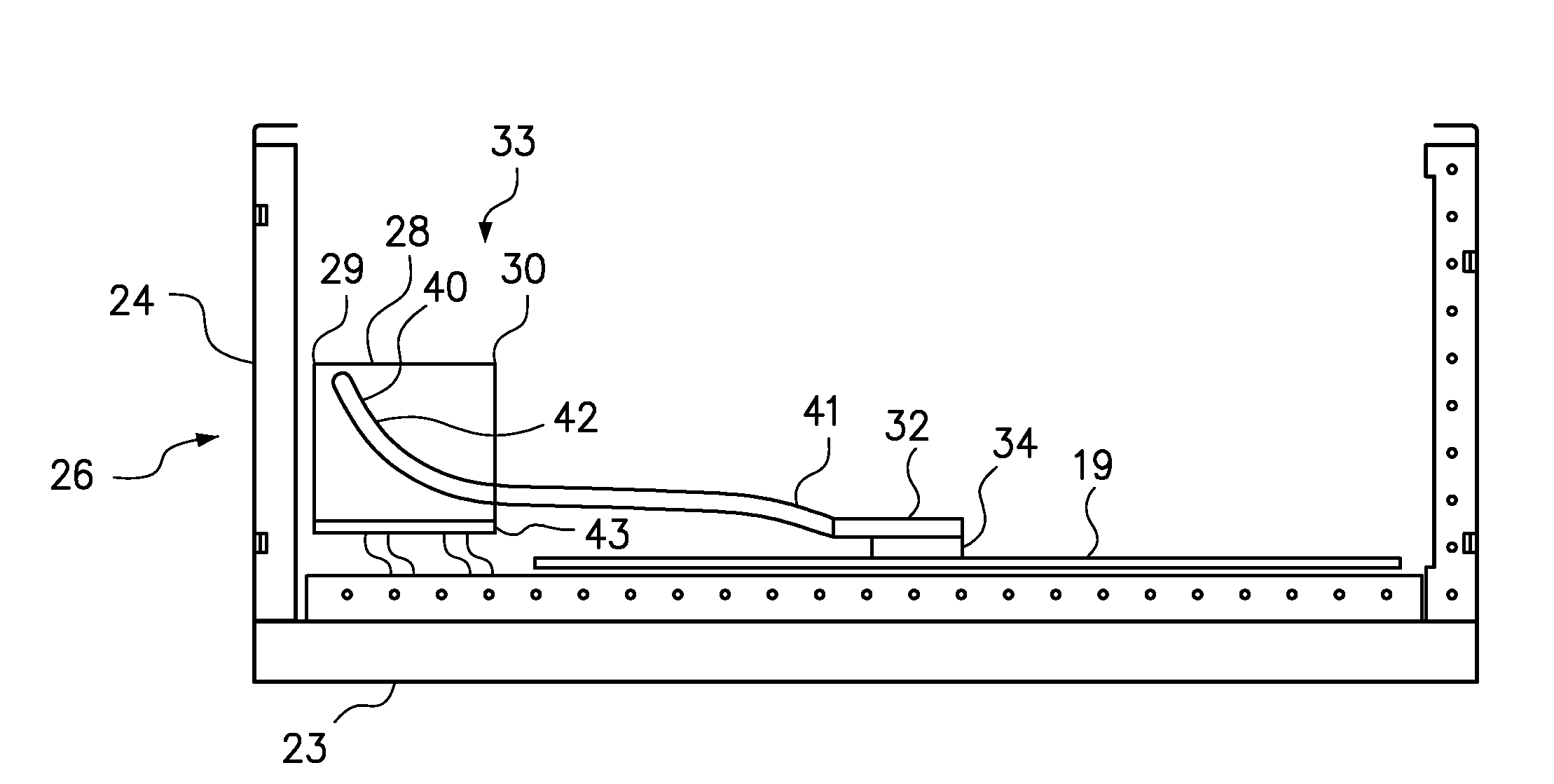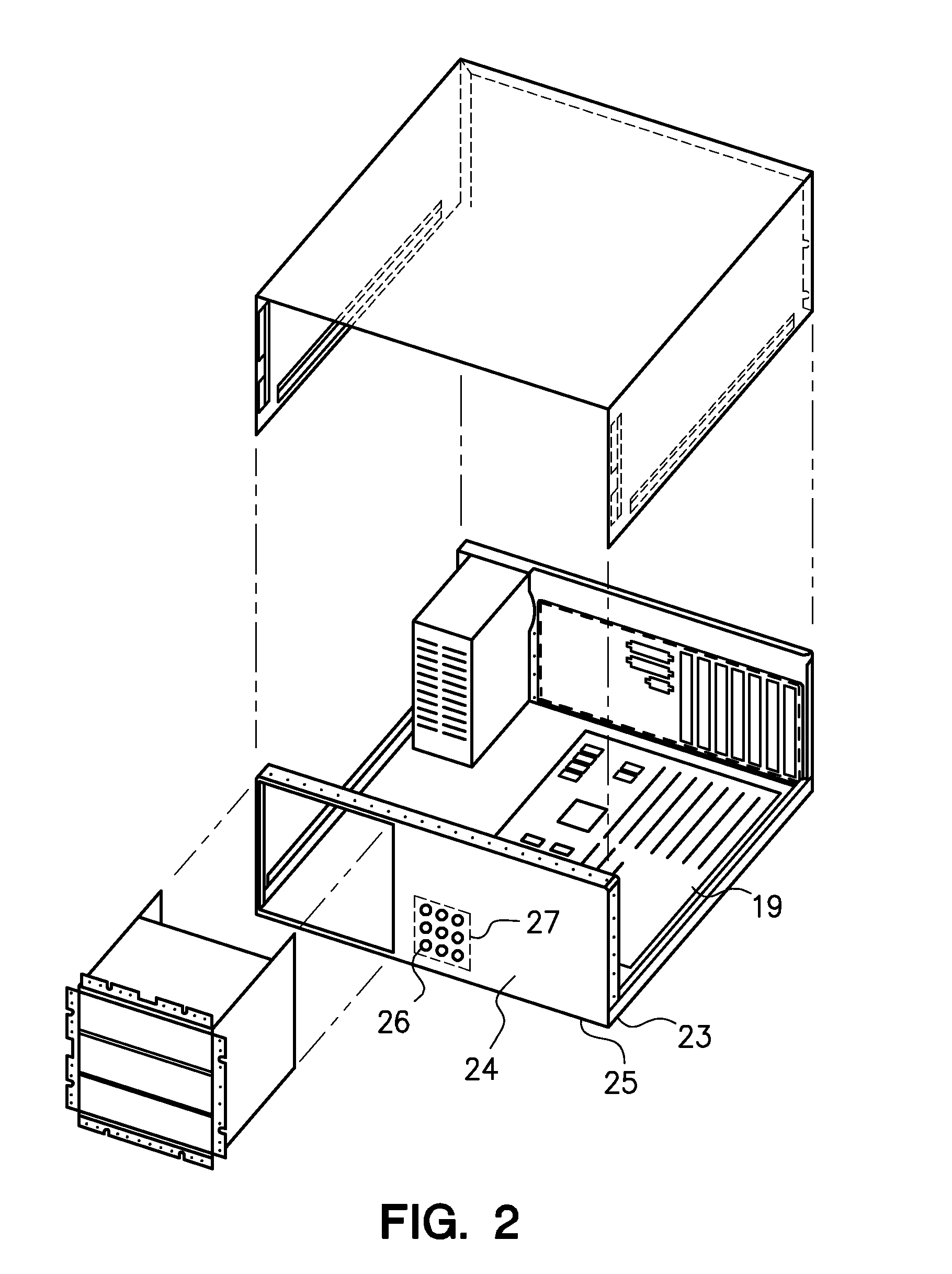Heat sink fin structure blocking electromagnetic radiation
a technology of electromagnetic radiation and heat sink, which is applied in the direction of electrical apparatus construction details, electrical apparatus casings/cabinets/drawers, instruments, etc., can solve the problem of electromagnetic radiation interference with the efficient operation of electronic components
- Summary
- Abstract
- Description
- Claims
- Application Information
AI Technical Summary
Benefits of technology
Problems solved by technology
Method used
Image
Examples
Embodiment Construction
[0015]One embodiment of the present invention provides an electromagnetic radiation (EMR) containment system comprising a heat sink to cool a heat-generating electronic component within a computer chassis, where the heat sink has a fin structure that cooperates with low-impedance vents within a bezel to provide improved cooling air flow to the heat sink and to block EMR from traversing the chassis. The fin structure comprises an inlet face, an outlet face and a plurality of interconnected air channels therebetween. The inlet face of the fin structure is disposed at a forward position near an air inlet across front of the chassis, and the bezel with low-impedance vents is connected to the front of the chassis to position the vents across the air inlet proximal to the inlet face of the fin structure. The fin structure is thermally coupled to a base in thermal contact or communication with a heat-generating electronic component. The fin structure dissipates heat from the component to a...
PUM
| Property | Measurement | Unit |
|---|---|---|
| Length | aaaaa | aaaaa |
| Length | aaaaa | aaaaa |
| Length | aaaaa | aaaaa |
Abstract
Description
Claims
Application Information
 Login to View More
Login to View More - R&D
- Intellectual Property
- Life Sciences
- Materials
- Tech Scout
- Unparalleled Data Quality
- Higher Quality Content
- 60% Fewer Hallucinations
Browse by: Latest US Patents, China's latest patents, Technical Efficacy Thesaurus, Application Domain, Technology Topic, Popular Technical Reports.
© 2025 PatSnap. All rights reserved.Legal|Privacy policy|Modern Slavery Act Transparency Statement|Sitemap|About US| Contact US: help@patsnap.com



